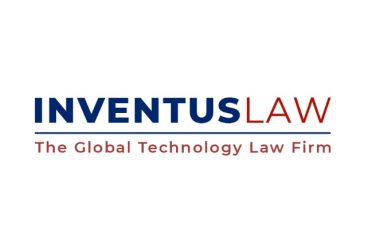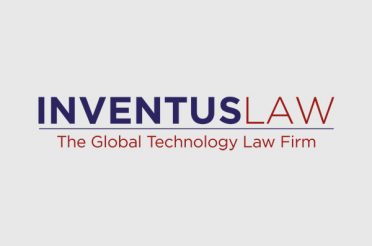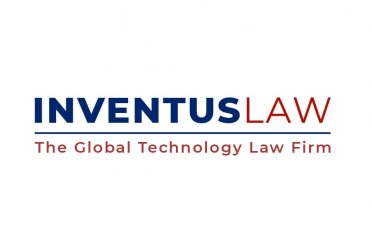SBA LOANS UNDER CARES[1] [Updated as on 06-04-2020]
The following chart and FAQs summarize the two different types of SBA loan programs covered by the CARES Act, as they apply to small businesses:
- The Economic Injury Disaster Loan (EIDL) under SBA Section 7(b) for up to $2 million for those businesses impacted by COVID-19 and a non-refundable Economic Injury Disaster Grant of up to $10,000 if used for the eligible purposes.; and
- The Paycheck Protection Program (PPL), a 100 percent federally guaranteed loan to employers who maintain their payroll during the COVID-19 emergency issued pursuant to the traditional SBA Section 7(a) loan but increased to $10 million for businesses impacted by the pandemic.
|
|
EIDL Loans | Paycheck Protection Loans (PPL Loan) |
| COVERED PERIOD | January 31, 2020 through December 31, 2020 | · February 15, 2020 and ending on June 30, 2020
· The Deadline for this loan application is June 30, 2020 |
| PURPOSE OF THE LOAN | To enable companies to continue to operate in the pandemic period. | To enable companies to continue to pay its payroll during the pandemic period. |
| LOAN SIZE
|
|
The lesser of:
OR
|
| ELIGIBILITY CRITERIA[2]
|
· The following are eligible for the EIDL Loan:
1. A small business with not more than 500[3] employees;
2. Individuals who operate under a sole proprietorship; and
3. ESOP with not more than 500 employees.
· The eligible borrowers are subject to SBA Affiliation rules. |
1. A small business with not more than 500[4] employees; 2. Individuals who operates under a sole proprietorship; 3. An independent contractor; and 4. Self-employed individuals.
1. a small business concern with not more than 500 employees with a NAICS code beginning with 72 (food and hospitality related); 2. a franchise; and 3. any business concern that receives financial assistance from the Small Business Investment Company (SBIC). |
| AFFILIATION RULES |
|
|
| TYPES OF ELIGIBLE BUSINESSES |
|
|
| FOREIGN OWNERSHIP OF THE COMPANY | There is no express prohibition or restriction for foreign ownership of the US Company applicant.
|
There is no express prohibition or restriction for foreign ownership of the US Company applicant in the CARES Act.
|
| TYPE OF LOAN AND GUARANTY REQUIREMENTS
|
|
|
| TERM OF LOAN
|
Up to 30 years | For any amounts not forgiven, the maximum term is 2 years |
| INTEREST RATE OF LOAN | Up to 3.75 percent for for-profit businesses. | 1% fixed interest rate |
| COLLATERAL
|
Collateral (Cash, IP, Accounts Receivables, Inventory, Assets, etc.,) for loans above $25,000.
|
No collateral required. |
| ALLOWABLE USES OF LOAN PROCEEDS
|
|
|
| WAIVERS AND AMENDMENTS
|
|
|
| PAYMENT DEFERRAL
|
N/A
|
Deferral of Principal, Interest and Fees for 6 months; interest will continue to accrue during this six-month deferment. |
| LOAN FORGIVENESS[7] | N/A |
1. Payroll costs[8]; 2. Mortgage interest if mortgage on real/personal property incurred before Feb. 15, 2020; 3. Rents in force before Feb. 15, 2020; and 4. Utility payments for which service began before Feb. 15, 2020.
|
| BORROWER
CERTIFICATIONS
|
Application signed under penalty of perjury. | Borrower must certify that:
|
| TIMELINE | Applications are processed in the order received. The typical timeline for approval is 2-3 weeks and disbursement can take up to 5 days. Borrowers are assigned individual loan officers for servicing of the loan.
|
|
| DOCUMENTS REQUIRED FOR LOAN APPLICATION | A borrower can apply for EIDL Loan application by clicking here:
https://covid19relief.sba.gov/#/.
The following supporting documents may be needed:
|
PPL Loan Application is available here:
https://www.sba.gov/sites/default/files/2020-04/PPP%20Borrower%20Application%20Form.pdf
|
FAQs
I. What costs are eligible for “payroll” payments under the PPL Loan?
- Compensation (salary, wage, commission, or similar compensation, payment of cash
tip or equivalent);
- Payment for vacation, parental, family, medical, or sick leave;
- Allowance for dismissal or separation;
- Payment required for the provisions of group health care benefits, including
insurance premiums;
- Payment of any retirement benefit; and
- Payment of State or local tax assessed on the compensation of employees.
II. What costs are not eligible for “payroll” payments under the PPL Loan?
- Employee/owner compensation over $100,000;
- Federal employment taxes imposed or withheld between February 15, 2020 and June 30, 2020, including the employee’s and employer’s share of FICA (Federal Insurance Contributions Act) and Railroad Retirement Act taxes, and income taxes required to be withheld from employees;
- Compensation of employees whose principal place of residence is outside of the U.S.;
- Qualified sick and family leave for which a credit is allowed under sections 7001; and 7003 of the Families First Coronavirus Response Act.
III. What employees are included in the 500-employee limit?
- Employees at all company locations count toward the 500-employee count.
- Employees of all affiliates are included in the 500-employee count.
- The Act does not exclude foreign affiliates, so their employees would be included in the 500-employee count.
- The SBA affiliation rules for non-fully owned affiliates apply to the 500-employee count, i.e., common control.
- VC or other common owners’ control over separate companies may result in the employees of both companies being counted as part of the 500-employee count.
- For franchise and hospitality businesses with multiple locations, the 500-person is done on a per location business.
- For businesses who are currently receiving financial assistance from the SBIC, the affiliation rules do not apply.
- The affiliation rules do not apply for businesses with not more than 500 employees and which as of the date on which the PPL Loan proceeds are disbursed, are assigned an NAICS code beginning with 72 (lodging, hospitality and restaurants, etc.).
- The affiliation rules also do not apply for businesses operating as a franchise.
IV. Is a borrower required to make any certifications for the PPL Loan?
Yes. A borrower must certify that:
- current uncertain economic times make the loan request necessary to support ongoing operations;
- funds will be used to keep workers employed and make payroll, mortgage payments, lease payments and utility payments;
- borrower does not already have an application pending for loan under PPL Loan for same purpose and duplicative of amounts applied for or received under a covered loan; and
- during the period beginning on Feb. 15, 2020 and ending on Dec. 31, 2020, that the eligible borrower has not received amounts under PPL Loan for the same purpose and duplicative of amounts applied for or received under a covered loan.
V. How can a borrower apply for loan forgiveness on the PPL Loan?
A borrower must apply through its lender for forgiveness on the PPL Loan. Such application must include:
- Documentation verifying the number of employees on payroll and pay rates, including IRS payroll tax filings and State income, payroll and unemployment insurance filings.
- Documentation, including cancelled checks, payment receipts, transcripts of accounts, or other documents verifying payments on covered mortgage obligations, payments on covered lease obligations, and covered utility payments;
- A certification from a representative of the eligible recipient authorized to make such certifications that—
- the documentation presented is true and correct; and
- the amount for which forgiveness is requested was used to retain employees, make interest payments on a covered mortgage obligation, make payments on a covered rent obligation, or make covered utility payments
- Any other documentation the Administrator determines necessary.
VI. Can a borrower get forgiveness for an EIDL Loan?
No. But an EIDL Loan may be converted to a PPL Loan.
VII. How does employee reduction and pay-cuts impact the eligibility under the PPL Loan?
The amount eligible for forgiveness is subject to reduction if during the eight-week period (from February 15, 2020 – June 30, 2020) the business:
- employs fewer full-time employees per month on average than it did during specified earlier periods; or
- reduces salary or wages by more than 25% for any employee earning less than $100,000 annually compared to their compensation in the most recent full quarter.
Exemption: There will be no reduction in the loan forgiveness amount if the employer eliminates the reduction in the number of full-time equivalent employees and in case of wage and salary cuts, eliminates such reduction, no later than June 30, 2020.
NOTE: Any remaining PPL Loan balance (that is, amounts not forgiven) are carried forward as an ongoing loan with max terms of 10 years, at a maximum interest rate of 4%. Principal and interest will continue to be deferred, for a total of 6 months to a year after disbursement of the loan. The clock does not reset.
VIII. What is the time period to receive a decision on loan forgiveness application?
The lender is required to issue a decision on loan forgiveness application no later than 60 days.
IX. Can borrowers apply for both the PPL Loan and the EIDL Loan?
Yes. Note, however, that if borrower’s EIDL Loan was not used for payroll costs, it does not affect borrower’s eligibility for a PPL Loan. If the EIDL Loan was used for payroll costs, then the PPL Loan must be used to refinance borrower’s EIDL Loan. Proceeds from any advance up to $10,000 on the EIDL Loan will be deducted from the loan forgiveness amount on the PPL Loan.
X. Can borrowers (business entity) apply for more than one PPL Loan?
No, an entity is limited to one PPL Loan. Each loan will be registered under a Taxpayer Identification Number at SBA to prevent multiple loans to the same entity.
XI. How does a borrower apply for the EIDL Loan?
A borrower can apply for EIDL Loan application by clicking here: https://covid19relief.sba.gov/#/. Additionally, following supporting documents are required to be filed:
- Tax information authorization (IRS Form 4506 T), completed and signed by each applicant, each principal owning 20% or more of the applicant business, each general partner or managing member; and, for any owner who has greater than 50% ownership in an affiliate business;
- Complete copies of federal income tax returns for the applicant business;
- Personal financial statements (SBA Form 413D) completed by the applicant, each principal owning 20% or more of the applicant’s business, and each general partner or managing member; a schedule of liabilities listing all fixed debts (SBA Form 2202 may be used); and
- A fee disclosure (SBA Form 159D), if applicable.
XII. How does a borrower apply for the PPL Loan?
Borrowers can apply through any existing SBA 7(a) lender or through any federally insured depository institution, federally insured credit union, and Farm Credit System institution that is participating. The Department of Treasury will also be in charge of authorizing new lenders, including nonbank lenders, to help meet the needs of small business owners. Other regulated lenders will be available to make these loans once they are approved and enrolled in the program.
Lenders have begun processing loan applications from April 3, 2020.
XIII. How does the PPL Loan relate to existing SBA loans?
Borrowers may apply for PPL Loan and other SBA financial assistance, including EIDL Loan, 7(a) loans, 504 loans, and microloans, and also receive investment capital from Small Business Investment Corporations (SBICs). However, borrowers cannot use their PPL Loan for the same purpose as their other SBA loan(s). For example, if a borrower uses PPL Loan to cover payroll for the 8-week covered period, such borrower cannot use a different SBA loan product for payroll for those same costs in that period, although borrower could use it for payroll not during that period or for different workers.
[1] If you are interested in engaging Inventus Law to help with SBA Loans’ process, please send an email to sbaloans@inventuslaw.com.
[2]The eligibility of a small business (with some exceptions under the CARES Act) for EIDL and PPL Loans with regard to the 500-employee count is subject to the SBA affiliation rules. Refer to the “Affiliation Rules” section of this chart for details.
[3] A borrower can have more than 500 employees if such borrower qualifies as “small” under the SBA size standards found at https://www.sba.gov/size-standards. Also, refer to the Affiliation Rules section of this chart for details.
[4] Same as footnote 3.
[5] An applicant’s Financing Documents (like Stock Purchase Agreements and Investor Rights Agreements) may require the applicant to obtain consent of the major investors/shareholders before applying for EIDL Loan and/or PPL Loan. Control means the possibility of the veto not actual use of the veto.
[6] Maximum payroll cost per employee which can be paid using PPL Loan is $8,333.33 per month. The Act excludes payments of payroll over $100,000 under the PPL Loan.
[7] For details and documentation requirements refer to the FAQs.
[8] Maximum payroll cost per employee which can be paid using PPL Loan is $8,333.33 per month ($100,000 on an annual basis).






